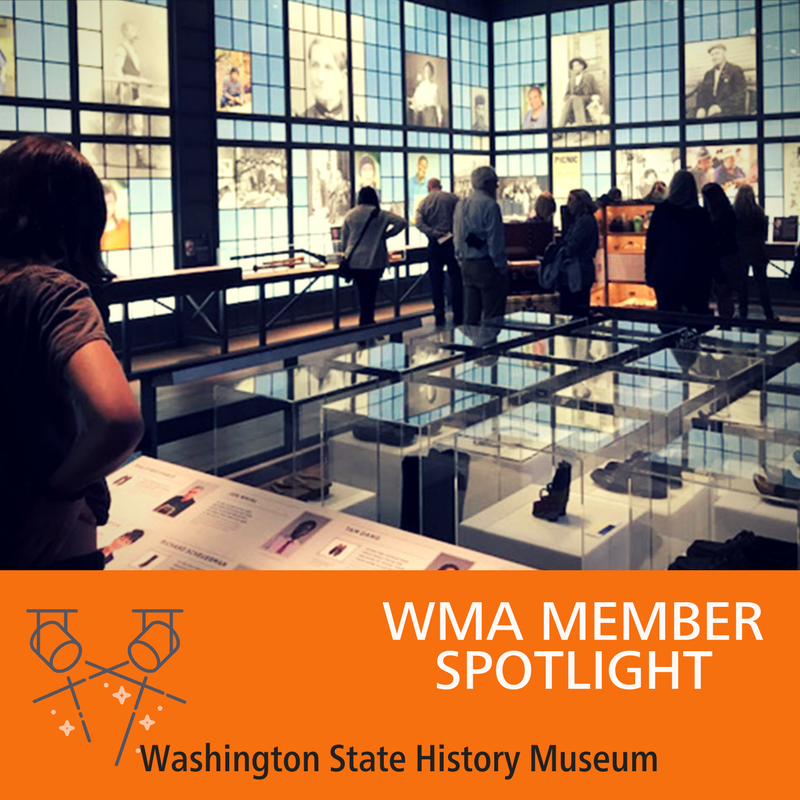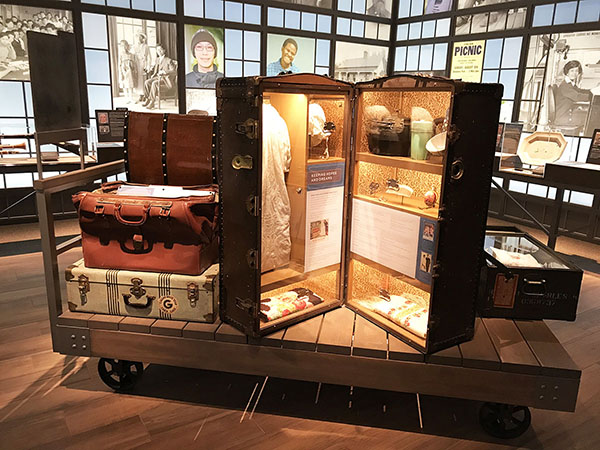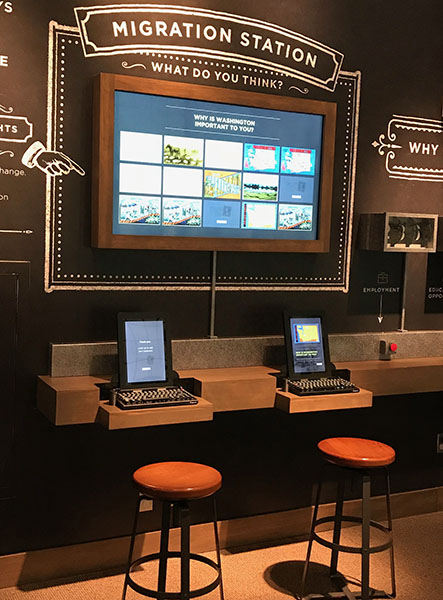 Immigration stories and the new exhibition, Washington: My Home
Immigration stories and the new exhibition, Washington: My Home
Washington State Historical Society
By Julianna Verboort, Marketing and Communications Director at the Washington State Historical Society
Early in the development of Washington: My Home, the Washington State Historical Society could not have foreseen the national immigration policy debates that would be taking place by the time their ambitious project opened in the fall of 2017. Washington’s Governor Jay Inslee has been active at the national level on some of these issues. He joined the Historical Society and its constituents at a ribbon-cutting ceremony for the new gallery, alongside Tacoma’s Mayor Victoria Woodard, members of the Citizens Advisory Committee, and community partners.
In the larger fabric of history, immigration and migration are more than recurring themes; they are woven back and forth, shaping and responding to culture, society, politics, and the physical environment. Could you trace any aspect of American history without connecting to immigration or migration? Today, these subjects are top of mind, dominating our news feeds and community conversations. This exhibition is exceptionally relevant and timely.
Washington: My Home tells the stories of many diverse individuals who have come to the Evergreen State, some by chance and some by choice, from the first African American settler to the first Syrian refugee. Walking into the spacious gallery with its tall, colored windows and ethereal light, it feels like a place of homage, and indeed the stories here are deeply moving tributes to the human experience.
The exhibition’s focal point, “Step Into My Shoes,” combines video, audio, and a unique display. Sixteen pairs of shoes are arranged on pedestals in front of an oversized video screen. One at a time, larger-than-life portraits appear on the screen, and visitors hear the corresponding first-person narrative describing the hardships, challenges and appreciations of each person’s journey. As the narrative plays, the related pedestal glows, presenting the shoes as cultural artifacts. Rail panels ring the display, offering brief biographies. The 16 people whose stories are told have had vastly different immigration experiences. To highlight just a few, Paula and Klaus Stern were the first Holocaust survivors to land in Seattle; Jok Nhial fled Sudan’s civil war at the age of 6 and―barefoot―walked over 1,000 miles to Ethiopia among the “lost boys” before he arrived in Washington; Mustafa Mohammed was kidnapped and tortured before he escaped Iraq in the trunk of a car, and his account of the losses he suffered moves me to tears every time I listen. Rising to the high ceiling, three walls of “Arrival Windows” feature the luminous faces of women, men, and children from across the globe and across time. An array of artifacts runs the length of the windows and prompts the question― what would you bring to a new homeland? Something practical, or something sentimental? This was a particularly difficult choice when circumstances dictated that very little could be packed for a long journey. Items on view include tools, musical instruments, earrings, a wedding cake topper, a family bible, a sewing machine, a cradleboard, and other objects held dear by those who brought them to their new homes.
In the center of the gallery, large luggage carts display stacks of retro suitcases and travel trunks that creatively entice visitors to dig into the exhibit’s rich content. There are leather satchels bursting with information panels to flip through, steamer trunks featuring objects from far-flung homelands, an interactive digital photo resting in an old suitcase with nearby earphones to hear more narratives, and more; these tactile devices are highly engaging for visitors of all ages.

Vintage suitcases have been retrofitted to house artifacts and information panels, and are stacked on large luggage carts in the center of the gallery. Tactile and inviting!
The walls on either side of the gallery entrance invite visitors to make personal connections. They can place magnetic markers on a huge world map to answer “Where do you come from?” or, at the “Migration Station,” write a digital post card to share.

Migration Station is aninteractive that encourages visitors to write virtual postcards in response to the exhibition.
Washington: My Home has been well received and resonates with meaning. It offers a unique opportunity to explore our state’s history by connecting the personal experiences of individuals―our fellow citizens, our neighbors―within a global context. It inspires personal reflection about our own stories and our connection to this place.
If you are planning to attend the WMA conference next fall, allow some time to explore Washington: My Home at the Washington State History Museum in Tacoma; you won’t want to miss it!
Banner Photo- A view over “Step Into My Shoes,” the centerpiece of the new exhibition Washington: My Home, with the “Arrival Windows” around the edges of the gallery.
Julianna Verboort is the marketing and communications director at the Washington State Historical Society. She has lived in five western states and along the way, has worked at Tacoma Art Museum, Denver Art Museum, Mesa Southwest Museum (now Arizona Museum of Natural History), and at Academy Studios. Her interests in connecting people through great stories drew her to the Historical Society, where she enjoys collaborating with a group of talented, fun, and mission-focused colleagues to explore how history connects us all.







